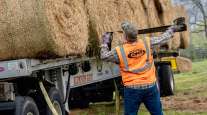Managing Editor, Features and Multimedia
Aurora: Autonomous Trucks Can Reduce Risk, Insurance Costs
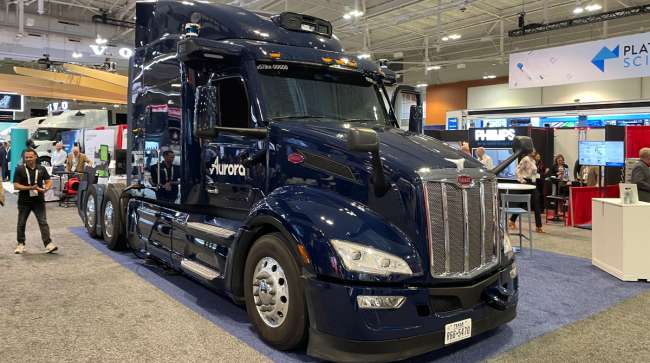
[Stay on top of transportation news: Get TTNews in your inbox.]
NASHVILLE, Tenn. — Autonomous trucks could help ease liability risk and even alleviate rising insurance costs in the trucking industry by proactively identifying potential safety hazards and avoiding or mitigating crashes, according to an executive at self-driving truck developer Aurora.
“We believe we’ll be able to significantly reduce the frequency and the severity of accidents on the road. That’s a tremendous value to the industry,” said Zac Andreoni, Aurora’s vice president of business development.
While insurance coverage and crash liability remain among the most common questions about the deployment of autonomous vehicles, Andreoni positioned those issues as areas of opportunity for this technology, especially in an industry threatened by nuclear verdicts.
“We understand you are operating in an extremely thorny and litigious environment. It’s pretty ugly out there,” he said during an Oct. 14 educational session at American Trucking Associations’ 2024 Management Conference & Exhibition.
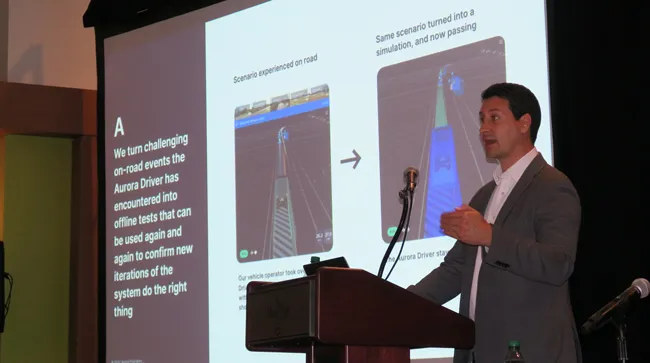
“We believe we’ll be able to significantly reduce the frequency and the severity of accidents on the road. That’s a tremendous value to the industry," Andreoni said. (Seth Clevenger/Transport Topics)
When crashes do occur, autonomous trucks will be able to provide authorities and insurance companies with much more data to recreate those scenarios and appropriately assign responsibility for accidents, Andreoni said. “That should ultimately reduce the cost of claims.”
RELATED: Autonomous Trucks Reshaping the Freight Industry
During the session, he showed videos illustrating how the company’s autonomous driving system, the Aurora Driver, has responded to various safety risks it has encountered during on-road testing.
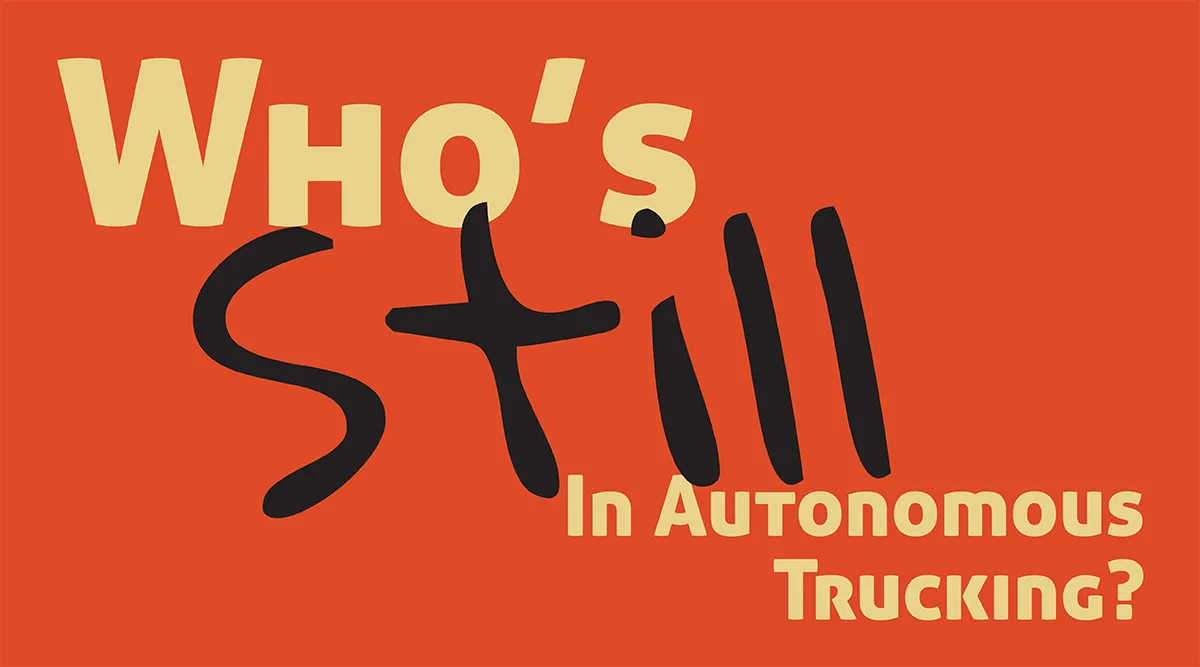
►Who's Still In Autonomous Trucking?
►Clevenger: Autonomous Trucking: A Rapidly Shifting Landscape
►Company snapshots: Aurora | Kodiak | Torc | Waabi | Stack AV | Gatik | Plus | Einride | Forterra | Outrider
►From November 2022: Who's Who in Self-Driving Truck Development
In one instance, the autonomous truck approached an intersection with a green light but stopped despite having the right of way because it detected that a pickup truck on the intersecting road was traveling too fast to stop in time. That pickup ran the red light and collided with another vehicle that continued through the green light, but the Aurora truck avoided the crash because it stopped short of the intersection.
In another situation, a pedestrian ran across a major highway in the middle of the day. While this would be an alarming situation for a human driver, who might become tense in the moment, the Aurora Driver identified the pedestrian from a long distance and planned ahead to safely avoid the person.
“It’s not only attentive, but it’s always calm,” Andreoni said of the autonomous driving system. “It makes a situation like this a nonevent.”
In addition to on-road testing, Aurora also is leaning heavily on simulation to accelerate the validation of its system to ensure it can respond appropriately to extremely rare safety situations it might see on the road.
In the past, Aurora has run simulations testing how its system would have handled fatal crashes involving commercial trucks on the Interstate 45 corridor between Dallas and Houston, where the company is planning to launch its first autonomous truck lane.
More recently, Aurora has been simulating real-world crash scenarios that resulted in large judgments against trucking companies.
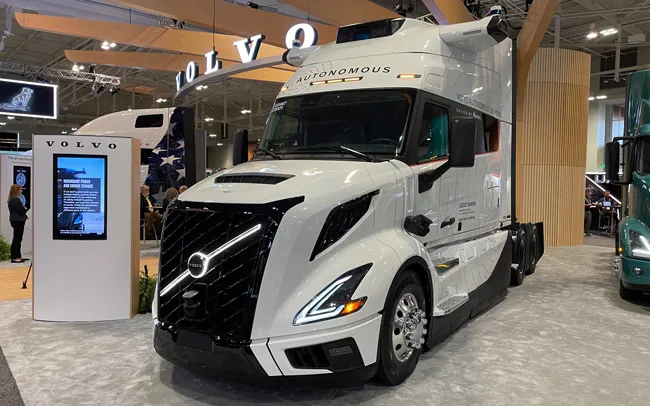
A new Volvo VNL tractor equipped with the Aurora Driver on the show floor at MCE 2024. (Seth Clevenger/Transport Topics)
In one such case, a distracted pedestrian walking into the street was struck by a trailer pulled by a truck making a righthand turn, resulting in a fatality. Based on Aurora’s simulations of that event, its virtual driver would have detected the pedestrian in the trailer sweep space and stopped the vehicle to prevent the accident.
“It’s important to note we don’t believe we can avoid every single scenario. We will be involved in crashes at some point,” Andreoni said. “Today, the incidents we’ve been involved in have been folks hitting us. … In those cases, we’re able to produce a ton of data about what actually happened.”
In addition to safety gains, autonomous trucks could supplement the industry’s workforce and help mitigate labor shortages while also unlocking more efficient freight movement, Andreoni said.
McLeod Software CEO Tom McLeod explores the potential for artificial intelligence to boost efficiency and build resilience. Tune in above or by going to RoadSigns.ttnews.com.
Autonomous driving technology doesn’t become fatigued or run out of available driving time under federal regulation.
“It’s not beholden to hours-of-service limitations,” Andreoni said. “That allows us to potentially deliver faster freight and increase utilization of the assets.”
Today, Aurora is regularly hauling freight for industry partners with its self-driving tractors, which still have a backup driver behind the wheel as the company works to finish validating the safety of its autonomous driving system.
Andreoni said Aurora remains focused on meeting its previously announced goal to begin its first driver-out operations between Houston and Dallas by the end of this calendar year.
Want more news? Listen to today's daily briefing above or go here for more info
Aurora also plans to begin piloting autonomous trucks on a 1,000-mile lane between Phoenix and Fort Worth, Texas, in the first half of 2025, with the intent to go driverless on that route later that year.
The MCE show floor featured two Class 8 tractors equipped with Aurora’s autonomous driving system — a Peterbilt Model 579 and a new Volvo VNL.
In addition to Aurora, several other companies are currently developing autonomous driving technology for commercial trucks, including Torc Robotics, Kodiak Robotics, Plus, Gatik, Stack AV, Waabi, Bot Auto, Einride and Forterra.





